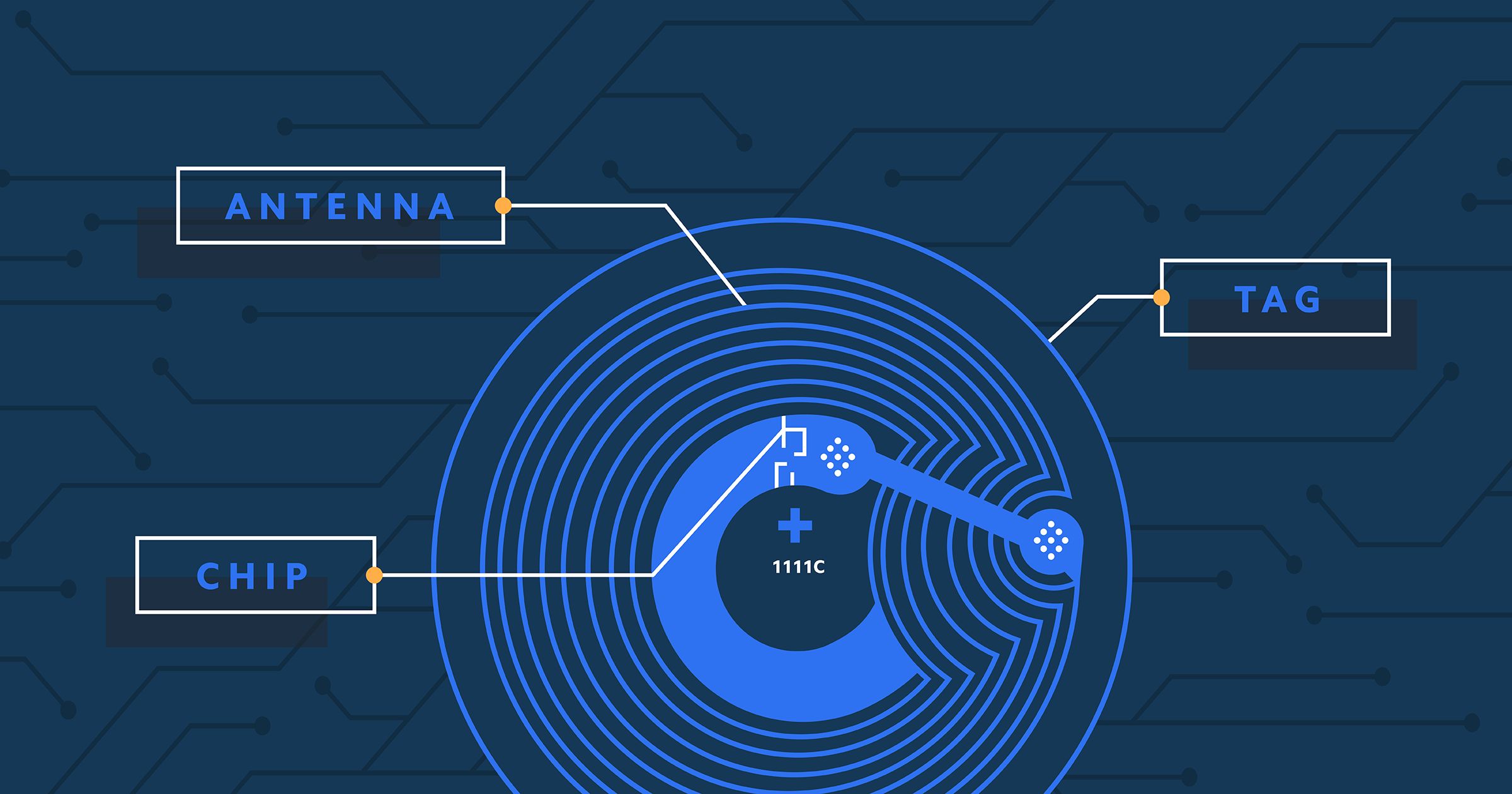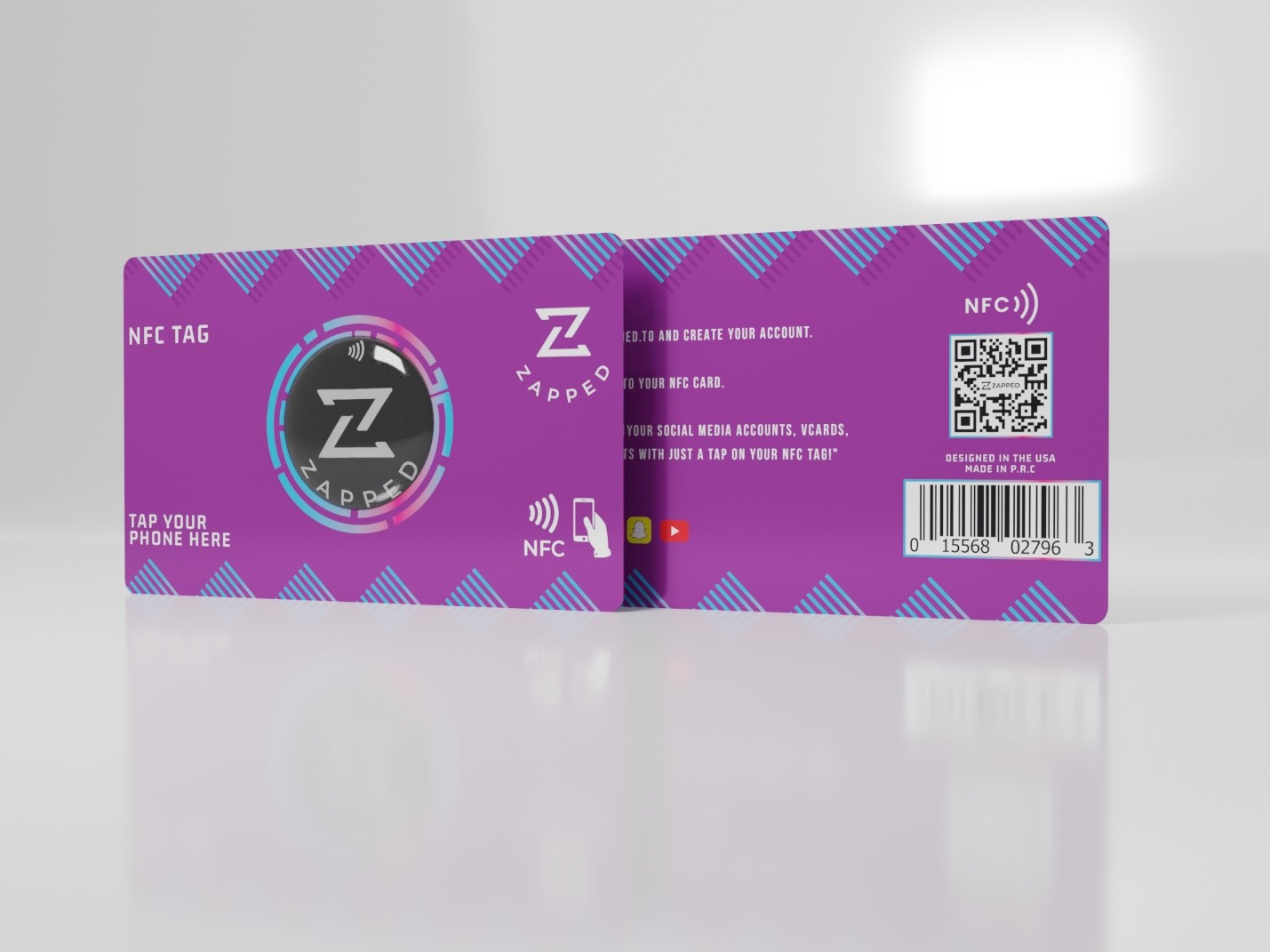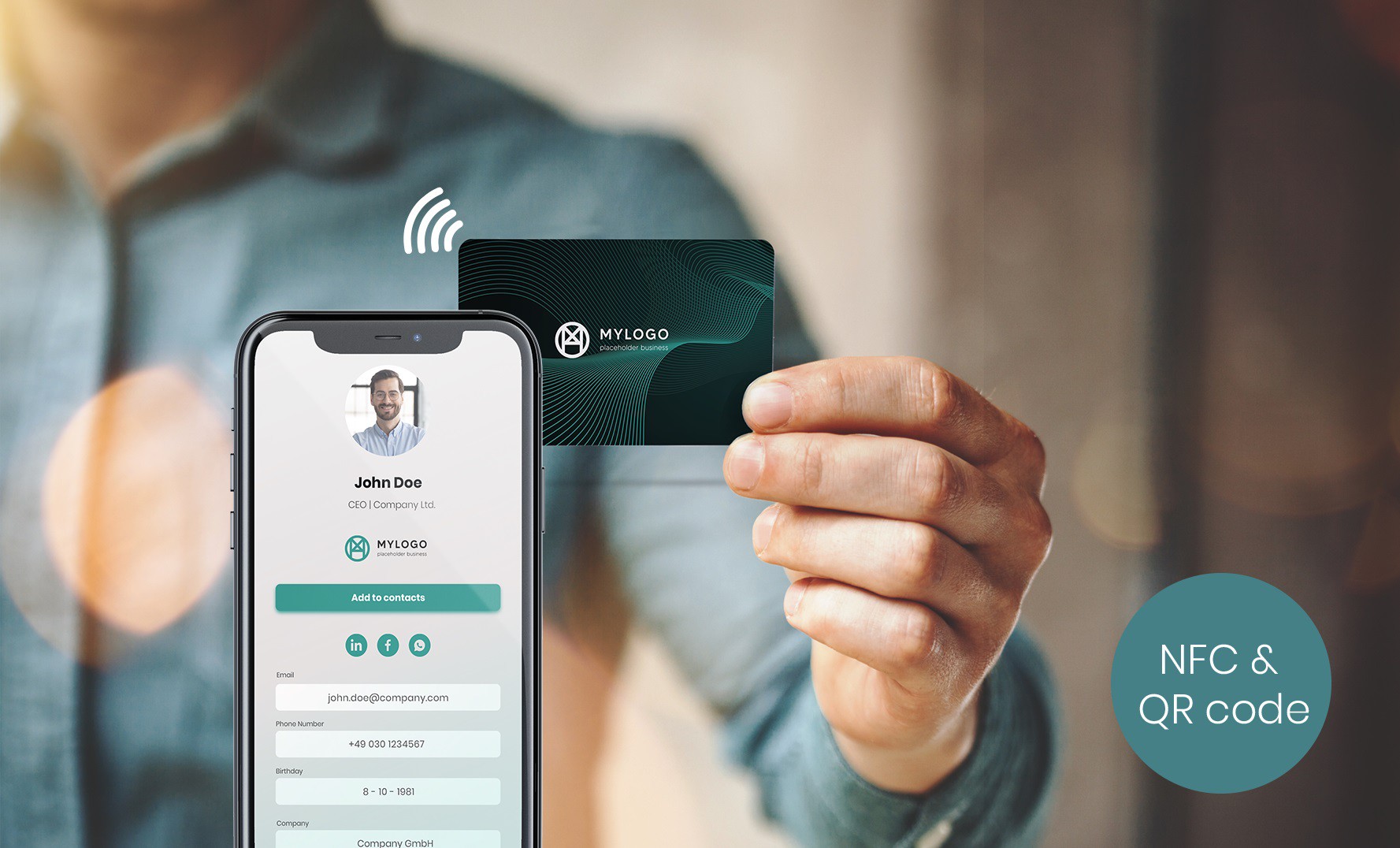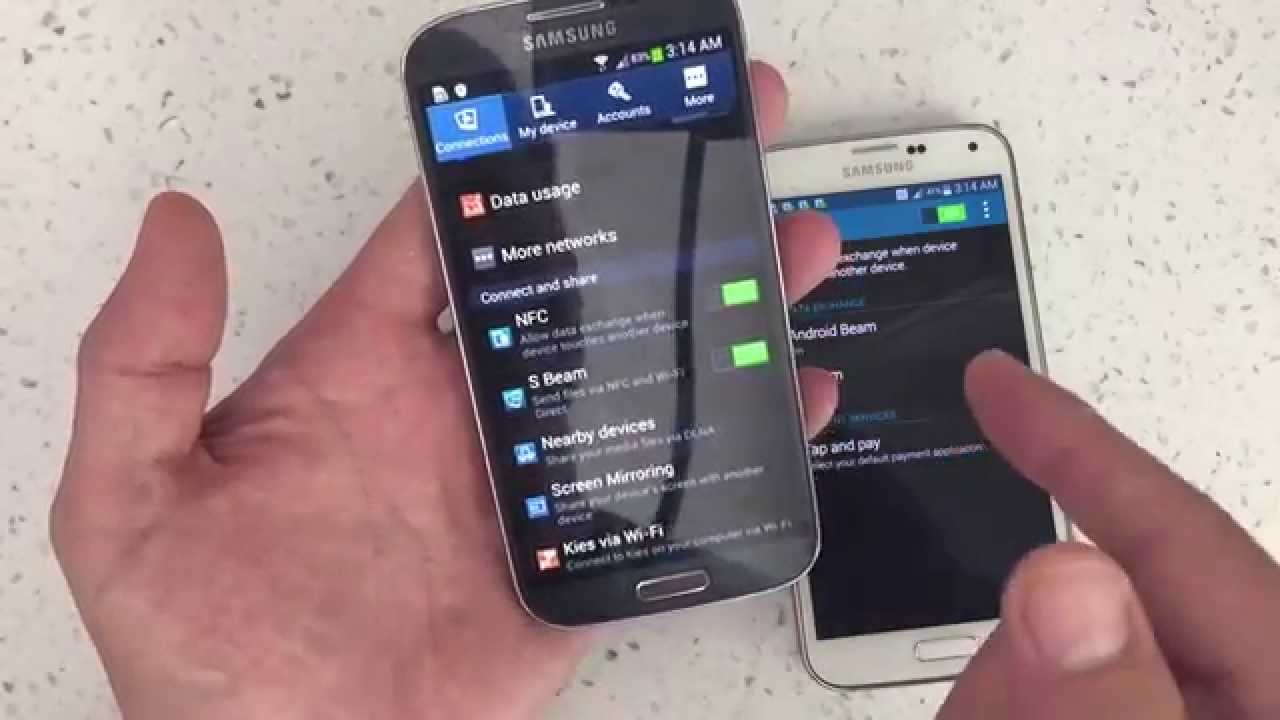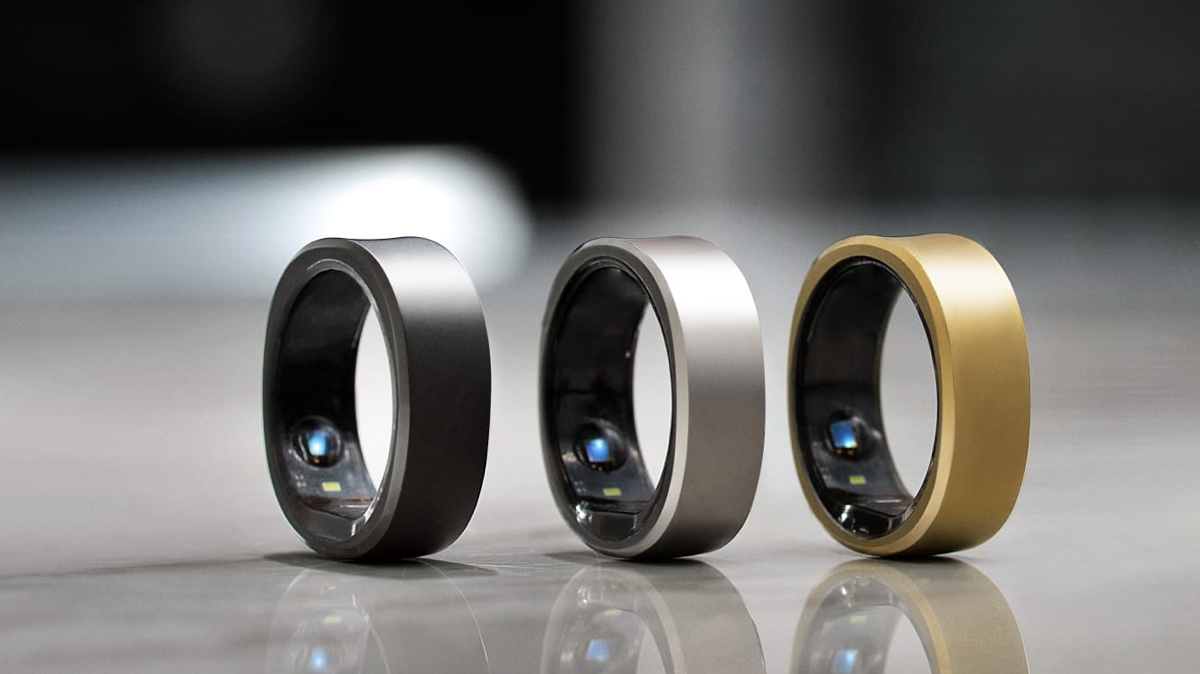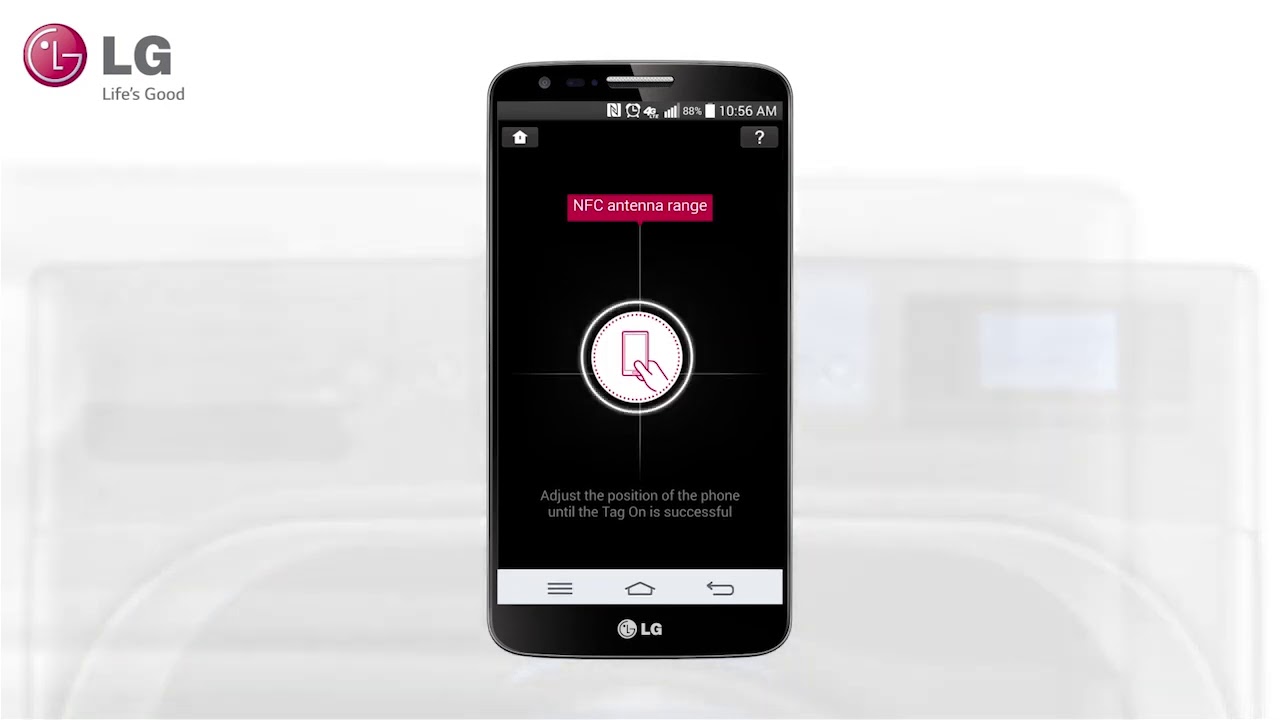Introduction
Near Field Communication (NFC) is a short-range wireless communication technology that allows devices to securely exchange data by simply bringing them close together. NFC has gained significant popularity in recent years and is now integrated into various devices such as smartphones, tablets, and contactless payment cards. This technology has revolutionized the way we interact with our devices, making tasks such as making payments and sharing information quicker and more convenient.
NFC technology operates within a short range of approximately 4 centimeters, which helps ensure a secure and reliable connection. It utilizes electromagnetic fields to enable communication between devices, making it possible to transfer data seamlessly and securely without the need for complex setup procedures.
NFC is often used in applications such as contactless payments, access control systems, public transport ticketing, and data transfer between devices. It provides a simple and efficient way to make transactions, exchange information, and connect devices effortlessly.
In this article, we will explore the fundamentals of NFC, how it works, its advantages and disadvantages, and popular applications of the technology. We will also discuss security concerns related to NFC and ways to use it effectively.
What Is NFC?
NFC, which stands for Near Field Communication, is a wireless communication technology that enables devices to exchange data when they are in close proximity to each other. It is a subset of radio-frequency identification (RFID) technology and is commonly used for contactless transactions and data transfer.
With NFC, devices can establish a connection by simply touching or bringing them close to each other, typically within a range of 4 centimeters. This close range ensures a secure connection and reduces the risk of unauthorized access.
NFC operates on the principle of electromagnetic induction. It uses small, low-power chips called NFC chips, which are embedded in devices such as smartphones, tablets, and contactless payment cards. These chips can both store and transmit data, allowing them to function as both a transmitter and a receiver.
Unlike other wireless technologies like Bluetooth and Wi-Fi, NFC does not require complex setup or pairing processes. It provides a simple and intuitive method of communication that is quick and convenient.
NFC technology is built upon three main components: the NFC chip, the antenna, and the communication protocol. The NFC chip stores data and processes commands, the antenna enables the transmission and reception of radio waves, and the communication protocol ensures that the devices can communicate effectively.
One of the defining features of NFC is its ability to support three different modes of operation: the reader/writer mode, the card emulation mode, and the peer-to-peer mode. These modes allow NFC devices to accommodate a wide range of applications, from making contactless payments to exchanging files between smartphones.
In the next section, we will delve deeper into how NFC technology works and explore its various applications.
How Does NFC Work?
NFC technology operates through a combination of electromagnetic induction and radio frequency communication. It allows devices to establish a connection and exchange data by simply bringing them close together, typically within a range of 4 centimeters.
When two NFC-enabled devices come into proximity, they create a magnetic field between their antennas. This magnetic field induces an electric current in the receiving device’s antenna, allowing it to power up and establish communication.
The communication between NFC devices occurs at a frequency of 13.56 MHz, which is within the high-frequency range. This frequency ensures a balanced trade-off between transmission speed and range, making NFC suitable for short-range communication.
NFC devices have two distinct modes of operation: active mode and passive mode. In active mode, a device generates its magnetic field, while in passive mode, the device relies on an external magnetic field generated by another NFC device to operate.
The most common application of NFC is the reader/writer mode. In this mode, an active NFC device—the reader or writer—sends commands to a passive NFC device, such as a contactless payment card or an NFC tag. The passive device responds by providing the requested information or executing the command.
Another mode of NFC operation is card emulation. In this mode, an NFC-enabled device acts as a virtual smart card or contactless payment card. It can mimic the data stored on a physical card and allow for contactless transactions. When placed near an NFC reader, the device transmits the stored card information, enabling seamless transactions.
The third mode, peer-to-peer mode, enables two active NFC devices to communicate and exchange data with each other. This mode is commonly used for file transfer, sharing contact information, or connecting devices for multiplayer gaming.
For NFC communication to occur, both devices must support NFC technology and have NFC enabled. Additionally, the devices need to be in close proximity, ensuring a secure and reliable connection. The entire communication process happens within seconds, making NFC a convenient and efficient technology.
Now that we have explored how NFC technology works, let’s move on to the various applications of NFC.
Uses of NFC
NFC technology has a wide range of applications across various industries, offering convenience and efficiency in everyday tasks. Let’s explore some of the key uses of NFC:
- Contactless Payments: One of the most popular applications of NFC is for contactless payments. NFC-enabled devices, such as smartphones or contactless payment cards, can be used to make secure transactions by simply tapping or waving them near a compatible payment terminal. This eliminates the need for physical cash or traditional payment cards, providing a fast and convenient payment method.
- Access Control: NFC technology has revolutionized access control systems by enabling contactless entry to buildings, offices, or venues. NFC-enabled access cards or smartphones can be used to gain entry by tapping or waving them near a compatible reader. This eliminates the need for physical keys or access cards, making access control systems more secure and convenient.
- Public Transport Ticketing: NFC is widely used in public transport systems around the world. NFC-enabled smart cards or mobile devices can be used as tickets, allowing users to easily tap and pay for their fares. This technology simplifies the ticketing process, reduces queues, and provides a seamless travel experience.
- Data Transfer: NFC enables quick and convenient data transfer between devices. For example, NFC can be used to transfer files, photos, or contact information between smartphones or tablets by simply tapping them together. This eliminates the need for cables or complicated pairing processes, making data sharing effortless.
- Smart Home Automation: NFC technology can be integrated into smart home systems to automate various tasks. By tapping an NFC tag or an NFC-enabled device near a designated area, users can control lighting, temperature, or other smart devices without the need for manual adjustments or complex setups.
These are just a few examples of the many uses of NFC technology. As the technology continues to evolve, we can expect to see even more innovative applications in fields such as healthcare, retail, logistics, and more.
Now that we have explored the practical uses of NFC, let’s compare NFC with another popular wireless technology: Bluetooth.
NFC vs. Bluetooth
Both NFC and Bluetooth are wireless communication technologies that are widely used in various devices. However, there are some key differences between the two technologies that make them suitable for different purposes. Let’s compare NFC and Bluetooth:
- Range: NFC has a very short-range communication range of about 4 centimeters. This limited range makes NFC ideal for secure and close-range transactions. On the other hand, Bluetooth has a significantly larger range of up to 100 meters, making it well-suited for applications that require longer distance communication.
- Speed: NFC provides faster data transfer rates compared to Bluetooth. NFC can transfer small amounts of data, such as contact information or payment details, in a matter of seconds. Bluetooth, on the other hand, is designed for larger data transfers and can provide higher data transfer speeds, especially with newer Bluetooth versions.
- Power Consumption: NFC technology is designed to operate with low power consumption, making it more energy-efficient compared to Bluetooth. This makes NFC ideal for battery-powered devices such as smartphones and smart cards, where power efficiency is crucial. Bluetooth, on the other hand, consumes more power and is commonly used in devices that have larger power sources.
- Pairing: NFC does not require complex pairing processes. When two NFC-enabled devices come into proximity, they can establish a connection automatically. This makes NFC convenient for quick and hassle-free communication. Bluetooth, on the other hand, requires a pairing process where devices need to be discovered, authenticated, and paired before they can communicate with each other.
- Applications: NFC is primarily used for applications such as contactless payments, access control, and information sharing between devices. Bluetooth, on the other hand, is commonly used for wireless audio streaming, file sharing, connecting devices to peripherals like headphones or speakers, and other applications that require longer range communication.
It’s important to note that NFC and Bluetooth are not mutually exclusive technologies. In fact, many devices, such as smartphones, can support both NFC and Bluetooth functionality. Manufacturers often integrate both technologies into their devices to provide users with a wide range of connectivity options.
Now that we’ve compared NFC and Bluetooth, let’s discuss the advantages of NFC technology.
Advantages of NFC
Near Field Communication (NFC) technology offers several advantages that make it an attractive choice for various applications. Let’s explore some of the key advantages of NFC:
- Convenience: NFC provides a seamless and intuitive way of communication. Devices equipped with NFC capabilities can establish a connection by simply bringing them close together, eliminating the need for complicated setup processes or manual pairing.
- Security: NFC communication requires close proximity between devices, reducing the risk of unauthorized access or eavesdropping. Additionally, NFC chips can be embedded in secure elements, such as tamper-resistant chips or SIM cards, enhancing the security of sensitive data used in contactless payments, access control systems, and other applications.
- Speed: NFC offers fast data transfer rates, allowing for quick and efficient exchange of information. Whether it’s sharing contact details, making payments, or transferring files, NFC enables users to complete tasks within seconds, enhancing productivity and user experience.
- Compatibility: NFC technology is backward compatible with older versions, ensuring interoperability with existing infrastructure and devices. This means that NFC-enabled devices can communicate with older NFC devices or other contactless technologies, such as RFID, providing flexibility and compatibility across different systems.
- Low Power Consumption: Compared to other wireless technologies, NFC operates with low power consumption. This makes it particularly well-suited for battery-powered devices, such as smartphones or smart cards, where energy efficiency is a crucial factor in extending battery life.
- Versatility: NFC supports a wide range of applications, from contactless payments and ticketing to data transfer and access control. Its versatility allows for a broad range of use cases, catering to different industries and user needs.
The advantages offered by NFC technology make it an attractive choice for various industries, including retail, transportation, healthcare, and more. The convenience, security, speed, and compatibility of NFC contribute to its widespread adoption and continued growth.
Now that we’ve covered the advantages of NFC, let’s explore some of the potential disadvantages or challenges associated with this technology.
Disadvantages of NFC
While Near Field Communication (NFC) technology offers numerous benefits, it also has a few drawbacks and challenges that need to be considered. Let’s take a look at some of the disadvantages of NFC:
- Short Range: The short communication range of NFC, which is typically limited to around 4 centimeters, can be seen as a disadvantage in certain scenarios. Unlike technologies like Bluetooth, which offer longer range communication, NFC requires devices to be in very close proximity for data exchange.
- Data Transfer Limits: NFC is primarily designed for small data transfers, such as contact information, small files, or payment details. Transmitting large files or streaming high-quality multimedia content using NFC is not feasible due to the technology’s limited bandwidth and slower data transfer rates compared to other wireless technologies.
- Limited Device Compatibility: Although NFC is increasingly becoming a standard feature in smartphones and other devices, there are still some devices that do not support NFC. This limits the usability of NFC-enabled services and may require users to carry additional items, such as NFC tags, to facilitate communication with devices that lack built-in NFC capabilities.
- Physical Obstructions: NFC requires devices to be in close proximity and have a clear line of sight to establish communication. Physical obstructions, such as walls or barriers, can interfere with NFC signals, potentially leading to unreliable connections or failed transactions.
- Potential Security Risks: While NFC is generally considered secure due to its short-range nature, there is still a risk of unauthorized access or interception of data. It is crucial to implement proper security measures, such as encryption and authentication protocols, to ensure the protection of sensitive information exchanged through NFC.
- Dependency on Power Source: NFC relies on an external power source to operate. For example, smartphones with NFC capabilities require sufficient battery power to support NFC functionality. If the device’s battery is low or depleted, NFC features may not be available until the battery is recharged.
Although NFC has its limitations, ongoing advancements in technology and the increasing adoption of NFC-enabled devices continue to address and minimize these disadvantages. As NFC technology evolves, we can expect improvements in range, data transfer speeds, and compatibility, further enhancing its usability and applicability in various domains.
Now that we’ve examined the disadvantages of NFC, let’s discuss some of the ways NFC can be utilized effectively.
Ways to Use NFC
Near Field Communication (NFC) technology offers a wide range of applications and opportunities for various industries and individuals. Let’s explore some of the ways NFC can be effectively utilized:
- Contactless Payments: NFC-enabled devices, such as smartphones or contactless payment cards, can be used for seamless and secure contactless payments. By simply tapping or waving the device near a compatible payment terminal, users can complete transactions quickly and conveniently.
- Information Sharing: NFC can be used to share information between devices efficiently. For example, by tapping two NFC-enabled smartphones together, users can transfer contact information, URLs, or small files instantly without the need for manual input or complex setup.
- Access Control Systems: NFC technology is widely used in access control systems, enabling secure and convenient entry to buildings, offices, or events. NFC-enabled access cards or smartphones can be tapped or waved near compatible readers to grant access, making traditional physical keys or access cards unnecessary.
- Smart Home Automation: With NFC-enabled devices, users can automate various tasks in their smart homes. By placing NFC tags strategically around the house, users can activate or deactivate specific settings or actions, such as turning on lights, adjusting the thermostat, or playing music, simply by tapping their NFC-enabled device on the designated tag.
- Event and Loyalty Applications: NFC technology can enhance event experiences by providing interactive and personalized features. Attendees can use NFC-enabled devices to check-in, receive personalized content or offers, and participate in interactive activities. In addition, NFC can facilitate loyalty programs, allowing users to redeem rewards or collect points by tapping their devices at NFC-enabled terminals.
- Transportation Ticketing: NFC is widely used in public transportation systems for contactless ticketing. Users can use NFC-enabled smart cards or mobile devices to easily tap and pay for public transport fares, eliminating the need for physical tickets and reducing queues.
These are just a few examples of the many ways NFC technology can be effectively utilized. As the technology continues to evolve, we can expect to see even more innovative applications and use cases emerging across various industries.
Now that we’ve explored the different ways NFC can be used, it’s important to address the security concerns associated with NFC technology.
Security Concerns with NFC
While Near Field Communication (NFC) technology provides convenience and efficiency in various applications, it also raises some security concerns that need to be addressed. Let’s explore some of the key security concerns associated with NFC:
- Unauthorized Access: One of the primary security concerns with NFC is the risk of unauthorized access to sensitive data. If an NFC-enabled device is compromised or in the hands of an attacker, they may attempt to intercept or manipulate NFC communications to gain unauthorized access to personal or financial information.
- Data Interception: NFC communication occurs through radio waves, which can potentially be intercepted by eavesdroppers. Unauthorized users with NFC-enabled devices placed in close proximity to an ongoing NFC transaction can attempt to intercept and capture the data being exchanged, posing a risk to the privacy and security of sensitive information.
- Data Modification: NFC communication involves the exchange of data between devices. Attackers may attempt to modify the exchanged data to perform unauthorized actions or manipulate the intended outcome of the NFC transaction. This can lead to fraudulent activities, unauthorized transactions, or the compromise of sensitive information.
- Malicious NFC Tags: NFC tags, which are commonly used for various applications, can be manipulated and used as a vehicle for executing malicious actions. Attackers may distribute NFC tags that, when tapped by unsuspecting users, exploit vulnerabilities in their devices or initiate harmful actions, such as installing malware or stealing sensitive data.
- Lack of User Awareness: Security vulnerabilities can be amplified when users lack awareness and understanding of NFC technology risks. Users may unknowingly tap their devices on malicious NFC tags, share sensitive information with untrusted devices, or neglect best security practices, further increasing the likelihood of security breaches.
To mitigate these security concerns, various measures can be implemented:
- Encryption: Implementing strong encryption protocols can protect data transmitted over NFC, preventing unauthorized access and interception.
- Authentication: Utilizing authentication mechanisms, such as secure protocols and digital signatures, can ensure the integrity and authenticity of NFC communications, preventing data modification and unauthorized access.
- Secure Element: Storing sensitive data in a secure element, such as a tamper-resistant chip or a trusted execution environment, can enhance the security of NFC-enabled devices, making it more difficult for attackers to compromise or manipulate the stored information.
- User Education: Raising awareness among users about NFC security risks and best practices can empower them to make informed decisions and take appropriate actions to protect their devices and data.
- Regular Updates: Keeping NFC-enabled devices and applications up to date with the latest security patches and firmware updates helps address vulnerabilities and protect against known security threats.
By implementing these security measures and educating users, the risks associated with NFC technology can be significantly mitigated, ensuring a safer and more reliable NFC experience.
Now that we’ve discussed security concerns, let’s move on to exploring some popular applications of NFC technology.
Popular Applications of NFC
Near Field Communication (NFC) technology has gained widespread adoption and is used in various industries due to its versatility and convenience. Let’s explore some of the popular applications of NFC:
- Contactless Payments: NFC-enabled mobile payment systems, such as Apple Pay and Google Pay, have revolutionized the way we make transactions. By simply tapping their smartphones or contactless payment cards on NFC-enabled payment terminals, users can securely and swiftly complete purchases without the need for physical cash or traditional payment methods.
- Access Control and Security: NFC plays a crucial role in access control systems, allowing secure and efficient entry to buildings, offices, or events. NFC-enabled access cards or smartphones can be used to authenticate users and grant access by tapping or waving the device near compatible readers, providing a seamless experience and eliminating the need for physical keys or access cards.
- Public Transportation Ticketing: NFC is widely used in public transportation systems for ticketing purposes. Users can conveniently tap their NFC-enabled smart cards or smartphones on validators or turnstiles to pay for fares and gain access to buses, trains, and other modes of public transport, making the ticketing process faster and more convenient.
- Smart Retail: NFC is transforming the retail industry by enabling interactive and personalized experiences. NFC tags can be placed on products, allowing customers to tap their devices and access additional product information, reviews, or promotional offers. NFC also facilitates contactless payments at POS terminals, improving the checkout process and enhancing customer convenience.
- Smart Posters and Advertisements: NFC technology is used in smart posters and advertisements, enabling users to interact with printed materials using their NFC-enabled devices. By tapping their devices on the NFC tag embedded in the poster or ad, users can quickly access multimedia content, visit websites, or receive additional information related to the advertised product or service.
- Mobile Ticketing and Event Experiences: NFC is widely employed in mobile ticketing and event experiences. Event attendees can use their NFC-enabled smartphones to gain entry, retrieve event-specific information, and interact with various activities and services. NFC-enabled mobile ticketing offers a convenient, paperless solution that streamlines entry processes and improves the overall event experience.
- Internet of Things (IoT) Integration: NFC technology is well-suited for integrating different IoT devices. NFC-enabled smartphones can act as a control interface for IoT devices, such as smart locks, lights, or appliances, allowing users to interact and control connected devices simply by tapping their devices on NFC tags or panels.
These are just a few examples of the extensive range of popular applications of NFC technology. As NFC continues to evolve and be adopted in new industries and domains, we can expect to see even more innovative and exciting use cases emerge.
Now that we’ve explored popular NFC applications, let’s summarize the information we’ve covered in this article.
Conclusion
Near Field Communication (NFC) technology has transformed the way we interact with our devices and the world around us. With its short-range wireless communication capabilities, NFC enables us to make contactless payments, share information, access secure areas, and more, simply by tapping or waving devices together.
In this article, we explored the fundamentals of NFC, including its working principles and modes of operation. We discussed the advantages of NFC, such as its convenience, security, and compatibility. Additionally, we addressed the potential disadvantages and security concerns associated with NFC and highlighted ways to mitigate those risks.
Moreover, we delved into various popular applications of NFC, ranging from contactless payments and access control to transportation ticketing and smart retail experiences. The versatility of NFC technology allows us to leverage its capabilities in different industries, enhancing efficiency, convenience, and user experiences.
As NFC technology continues to evolve, we can expect to see further advancements and increased adoption across various sectors. The ongoing innovations in NFC-enabled devices, applications, and security measures will contribute to its wider integration and use in our daily lives.
Whether it’s facilitating seamless transactions, streamlining access control systems, or enhancing the retail and event experiences, NFC plays a significant role in enhancing connectivity and convenience. Its ability to securely exchange data in close proximity opens up endless possibilities for the future of technology.
In conclusion, Near Field Communication (NFC) is a powerful wireless technology that has revolutionized the way we connect and interact with our devices and surroundings. Its potential for secure and efficient communication continues to propel its continued growth and adoption in diverse applications.







